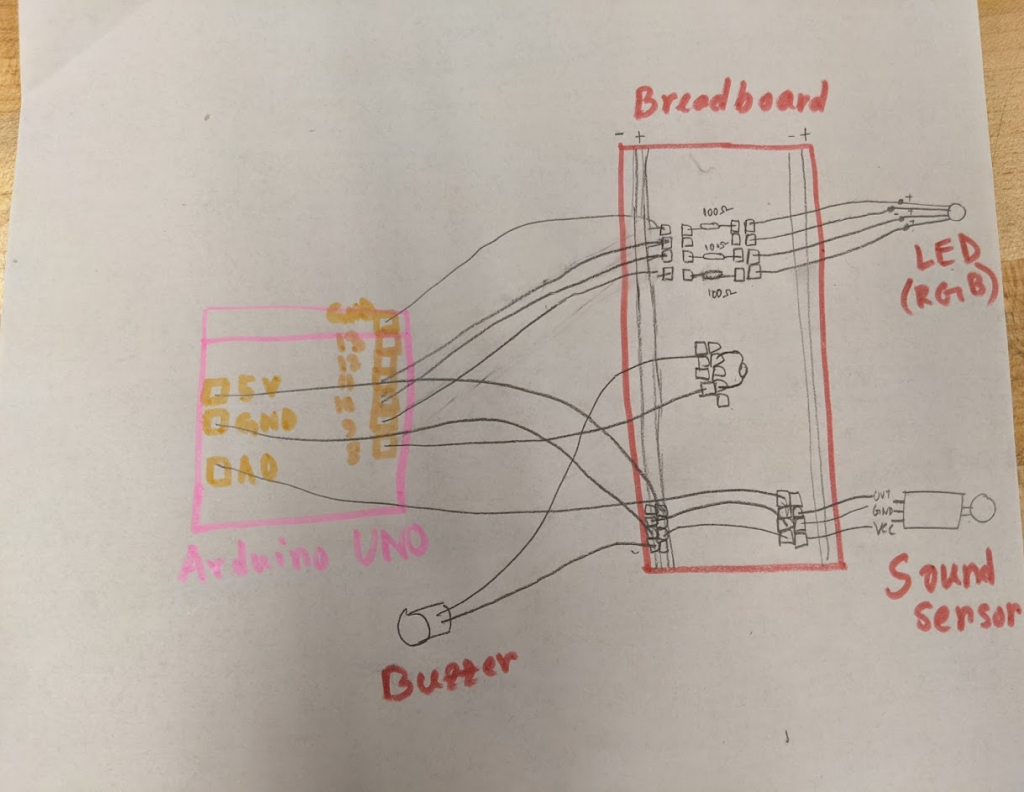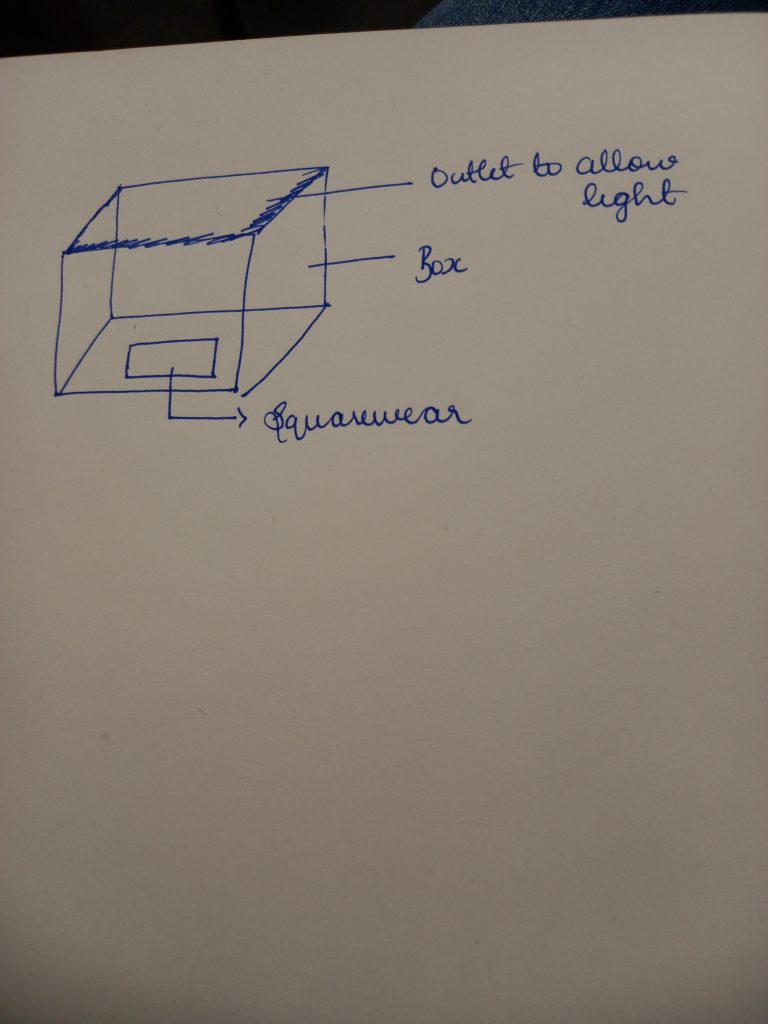Project Aim
Develop a noise detector that buzzes and lights up when the sound levels reach above a certain level acceptable in the tranquility room in the dining hall.
Team Members
Sulagna Saha, Yu Wati Nyi, Mumtaz Fatima
Documentation of Our Build Process
- Collect the required components from the Arduino Kit. The required components were: Arduino Uno kit, Breadboard, Buzzer, LED Light, Sound Sensor
- Connect the Arduino Uno to the breadboard and make the necessary connections with the LED bulb, Buzzer, and Sound Sensor
- Modify the code and add the functionality to activate buzzer whenever the sound sensor detects a value, it saves the value, finds the peak value, uses this value of the detected sound to convert it into volts.
- Cardboard box:
- Cut cardboard to create a box with 2 open lateral ends.
- Make 3 holes to add the components. One hole on the top to attach the sound sensor and 2 holes on the side to attach the LED and the buzzer
- Test the connections and view the serial monitor to check whether the code works as intended
- Finally attach the breadboard to the bottom of the cardboard box and cover the 2 open ends.
Circuit Diagram

Code
/*
MAX4466 (adafruit mic)
Written by Shani Mensing, edited by Audrey St. John
Modified by Yu Wati Nyi, Mumtaz Fatima, Sulagna Saha
Circuit: microphone VCC connected to 3.3V, OUT to analog input A0
*/
// hook up the out of the mic to analog input A0
int MIC_IN = A0;
// Sample window width in milliseconds (50 ms = 20Hz)
int sampleWindow = 50;
int red_light_pin= 11;
int green_light_pin = 10;
int blue_light_pin = 9;
Int buzzer_pin = 8;
/**
* Initialization code
**/
void setup()
{
// open serial port and set data rates to 9600 bps (bits-per-second)
// this lets us communicate to/from the arduino
Serial.begin(9600);
pinMode( MIC_IN, INPUT );
pinMode(red_light_pin, OUTPUT);
pinMode(green_light_pin, OUTPUT);
pinMode(blue_light_pin, OUTPUT);
pinMode(buzzer_pin, OUTPUT);
}
/**
* Main program loop happens constantly.
**/
void loop()
{
// read the analog sensor as volts
double soundSensed = sampleSoundPeak();
// convert to volts
double volts = (soundSensed * 3) / 1024;
if(volts<1){
RGB_color(0, 255, 0); // Green
delay(1000);
}
else{
RGB_color(255, 0, 255); // Magenta
delay(1000);
tone(buzzer_pin, 1000); // Send 1KHz sound signal...
delay(1000); // ...for 1 sec
noTone(buzzer_pin); // Stop sound...
delay(1000);
}
// print it out
Serial.println(volts);
}
/////////////// Our own methods
/**
* Sense biggest input difference are being input from the analog MIC sensor
* over a certain "window" of time.
* Values returned are in the range 0 - 1024.
**/
double sampleSoundPeak()
{
// record start time
double startMillis = millis();
// this will be the highest peak, so start it very small
int signalMax = 0;
// this will be the lowest peak, so start it very high
int signalMin = 1024;
// will hold the current value from the microphone
int sample;
// collect data for 50 ms
while ( (millis() - startMillis) < sampleWindow )
{
// read a value from mic and record it into sample variable
sample = analogRead( MIC_IN );
// toss out spurious readings
if (sample < 1024)
{
// if the current sample is larger than the max
if (sample > signalMax)
{
// this is the new max -- save it
signalMax = sample;
}
// otherwise, if the current sample is smaller than the min
else if (sample < signalMin)
{
// this is the new min -- save it
signalMin = sample;
}
}
}
// now that we've collected our data,
// determine the peak-peak amplitude as max - min
int peakDifference = signalMax - signalMin;
// give it back to the caller of this method
return peakDifference;
}
void RGB_color(int red_light_value, int green_light_value, int blue_light_value)
{
analogWrite(red_light_pin, red_light_value);
analogWrite(green_light_pin, green_light_value);
analogWrite(blue_light_pin, blue_light_value);
}
